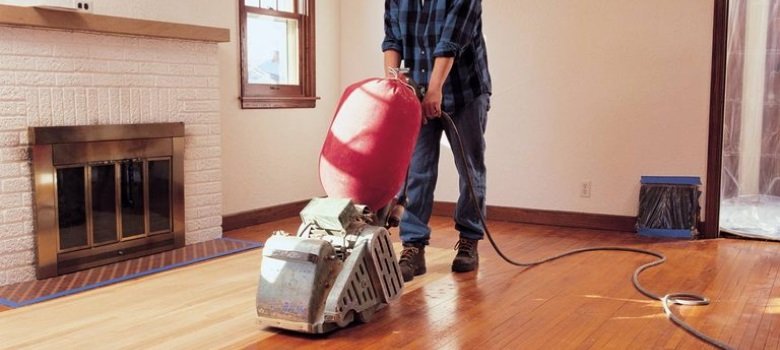
Floor Sanding
Wood floors are a beautiful and timeless addition to your home, but over time they can become worn, scratched, or stained.
One way to restore the beauty of your timber floors is by sanding them down and refinishing them. The sanding process can remove imperfections, level out the surface, and prepare them for a new finish.
However, before you pull out the tools and conjure up the ‘DIY’ spirit to sand your wood floors, it's important to understand the different types of sanders available and which ones are best suited for your needs.
In this article, we'll discuss:
Different types of sanders
How to choose the right sander for your wood floors
The best sandpaper grits to use for a smooth finish
We'll also provide some tips for sanding your floors to help you achieve a professional-looking result.
Let’s get right into it.
Drum sanders are one of the most popular types of floor sanders and for good reason. They're very efficient at removing the top layer of your timber flooring and smoothing them out by spinning a large drum with sandpaper attached to it. Drum sanders are perfect for large, flat surfaces, but they can be difficult to use on stairs or in tight spaces.
Orbital sanders are great for getting into tight spaces or sanding smaller areas. They work by spinning a sanding pad in small circles. They're not as efficient as drum sanders, but they're great for touch-ups or for sanding in corners and other tight spots.
Belt sanders are similar to drum sanders, but they use a continuous loop of sandpaper instead of a large drum. They're great for removing a lot of material quickly, but they can be difficult to control. Belt sanders are best for experienced users who are comfortable with their power.
Edgers are small, handheld sanders that are perfect for sanding around the edges of your room or in tight spots. They're very easy to use and are great for beginners. However, they're not very powerful and won't be able to remove a lot of material at once.
Random orbital sanders are a hybrid between orbital and belt sanders. They use a round sanding pad that spins and vibrates at the same time, which makes them very efficient at removing material. They're also very easy to control and are great for beginners. However, they're not as powerful as drum or belt sanders and may take longer to sand your floors.
When choosing a floor sander, it's important to consider the type of wood you're sanding, as well as the size and shape of your room.
Different types of wood may require different types of sanders. For example, softer woods like pine may require a gentler sander like an orbital sander, while harder woods like oak may require a more powerful sander like a drum sander.
In addition, the size and shape of your room will also affect your choice of the sander. Larger rooms may require a more powerful sander like a drum sander, while smaller rooms may be better suited for an orbital sander or an edger.
When choosing a floor sander, it's also important to consider the type of sandpaper you'll be using. Different types of sandpaper are designed for different types of sanders, so be sure to choose the right type for your sander.
How to Choose the Best Floor Sanding Services in Perth [With Bonus Checklists]
When it comes to sanding your timber floors, it's not just about choosing the right type of sander. You also need to make sure you're using the right sandpaper grit.
Sandpaper grit refers to the roughness of the sandpaper. The higher the grit number, the smoother the sandpaper. When sanding your floors, you'll typically start with a lower grit sandpaper and work your way up to a higher grit sandpaper.
For example, if your floors have a lot of scratches or deep stains, you may want to start with a coarse sandpaper like 36 grit. This will help remove the top layer of the wood and any scratches or stains. From there, you can move up to a finer sandpaper like 60 grit, then 80 grit, and so on, until you reach your desired level of smoothness.
It's important to note that different types of sandpaper are designed for different types of sanders. For example, drum sanders typically use strips of sandpaper that are wrapped around the drum, while orbital sanders use circular discs of sandpaper.
When purchasing sandpaper, make sure you're buying the right type for your sander. You should also look for sandpaper that's specifically designed for hardwood floors, as this will ensure that it's durable enough to withstand the sanding process.
Once you've chosen the right type of sander and sandpaper grit, it's time to start sanding your floors.
Not looking forward to the time, cost and hassle of a major floor sanding project?
Discover more about our timber floor sanding services here.
Sanding your wood floors is a great way to give your home a fresh new look. By choosing the right type of sander and sandpaper grit, and following the proper techniques, you can achieve a professional-level finish that will last for years to come.
Remember to always wear proper safety gear, including eye and ear protection, and follow all manufacturer instructions when using your sander. If you're not comfortable sanding your floors yourself, consider hiring a professional to do the job for you.
With a little time and effort, you can transform your floors from dull and worn to smooth and shiny, and enjoy a beautiful new look for your home.
At Allen Brothers Flooring we know all things flooring. We help our clients from the very start of the process with free onsite quotes so you know what to expect.
Every project we take on is managed with the highest quality and attention to detail. We’re proud to be Australian and family owned with over 30 years (and 20+ years in Perth) of experience in the flooring industry.
Call us on 0407 983 020 or request an obligation-free quote online!
If you want to learn more about floor sanding, check out our other resources:

